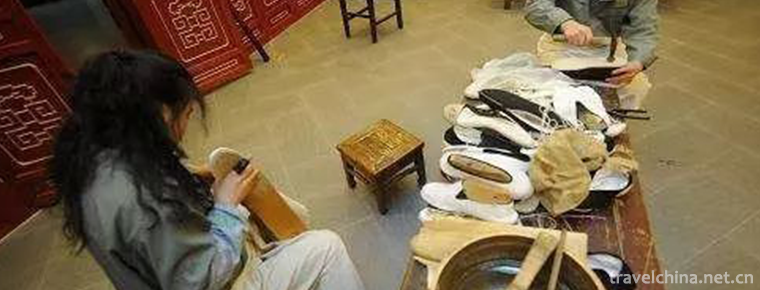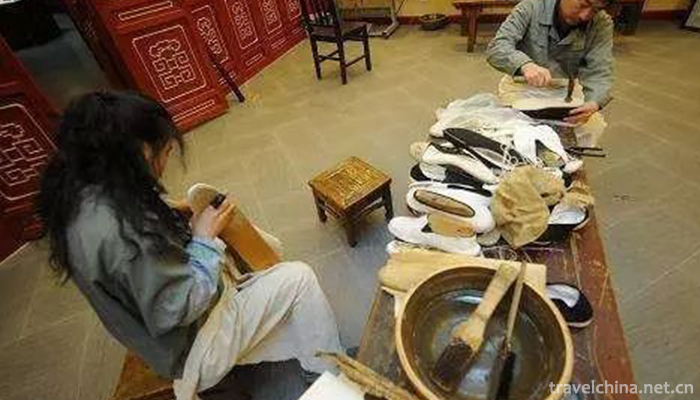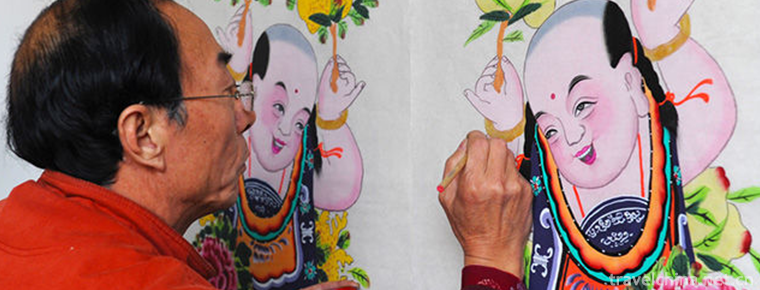2019-04-30

- By ChinaWiki.net
- Chinese Edition
- 2019-06-08
Manufacturing Skills of Inside Lined 1000-Layer Cloth Shoes
Inline Shoe Shoe Shoe Shoe Shoe Shoe Shop was founded in 1853 in Xianfeng, Qing Dynasty. At first, it was specially designed for the royal family and officials at all levels to make 1000-floor Dynasty boots. The earliest shop was located in Dongjiang Mixiang, Beijing (today's Taiji Factory), and its founder was Zhao Ting. In the name of the shop, "inside" refers to the palace, while "Liansheng" implies that the boots made in the shop allow officials to wear them up to three consecutive levels. After the collapse of the Qing Dynasty, Liansheng used the skill of making official boots to make thousand-layer cloth shoes. Its quality was excellent and it was well-known in Beijing for a time.
Inline 1000-layer sole shoes have been manufactured by traditional handicraft methods, which are strict in technology, unique in technology, exquisite in material selection and exquisite in workmanship. Its technical characteristics can be summarized as "one high, four high", "one high", that is, high technological requirements, "four more" that is, more production processes, more patterns, more methods of shoe-spooning, more varieties of cloth shoes. It often takes four or five days to make a pair of thousand-layer cloth shoes. It takes more than 90 processes to complete. Each process has strict requirements. It pays attention to accurate size, skilled technique, appropriate strength and meticulous care. Among them, there are three different ways of shoe-making: positive, reverse and bright. There are nearly 40 kinds of tools used in the whole process of shoe-making. In addition to improving the production process, inline lifting also requires high quality of raw materials, accessories and accessories.
According to the season, age, gender, customs and other differences, Linsheng has created more than 1500 kinds and styles of cloth shoes products, and has carried out a comprehensive and effective excavation and collation of the traditional folk shoes culture in northern China. Its thousand-layer cloth shoes mainly include men's shoes, women's shoes, children's shoes, slippers, four series of products, with the advantages of foot care, comfort and so on, are welcomed by the vast number of consumers.
The technique of making inline thousand-layer sole shoes is inherited by the traditional mode of "master with apprentice". However, due to its complexity, difficulty and long learning time, apprentices need more than three years to become masters. Therefore, fewer and fewer people are learning this technique, and the inheritance is facing a great crisis, which requires attention from relevant parties.

Ask a Question
Your email address will not be published.


0 Questions